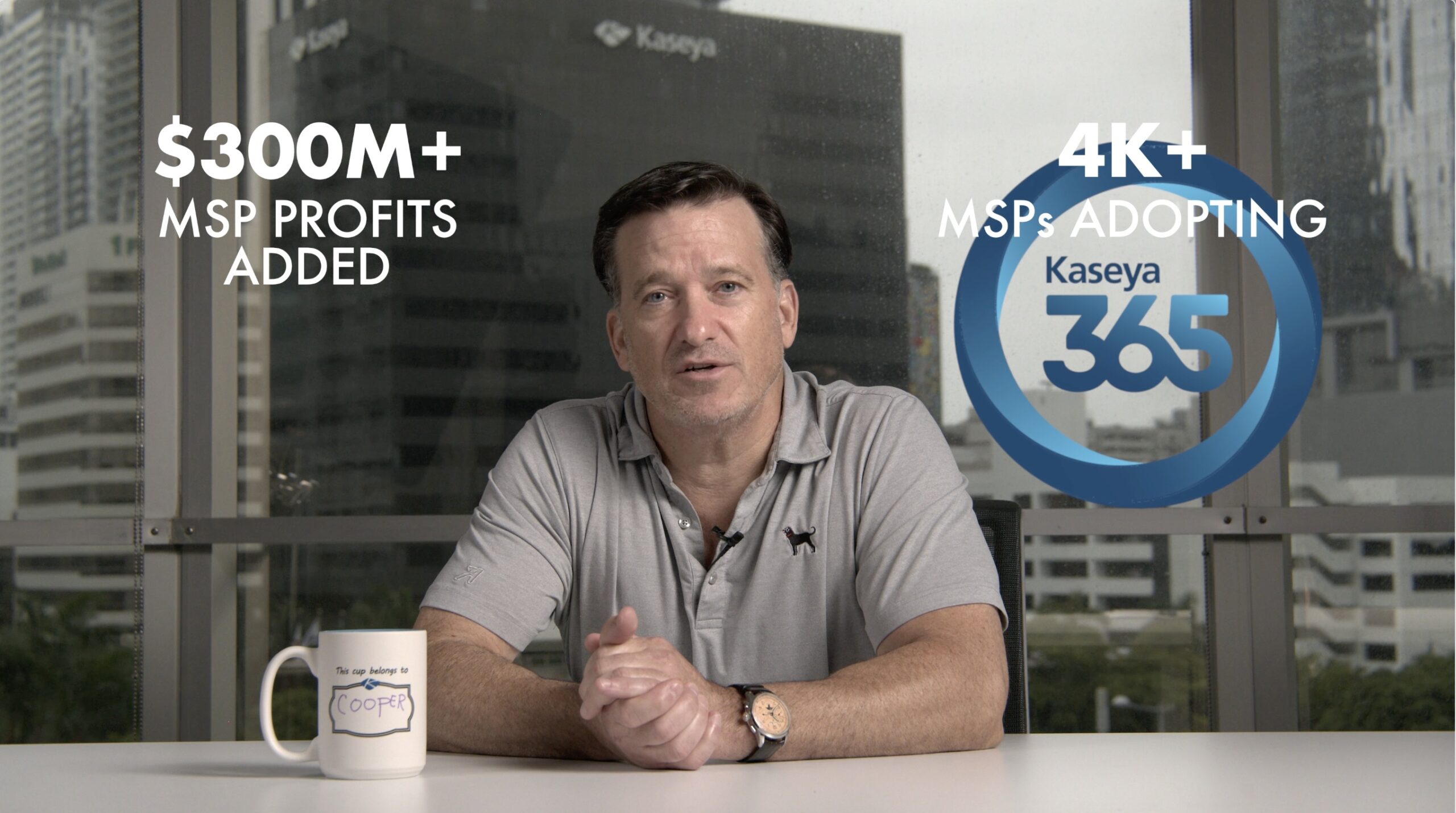Probably the single most important aspect of running a business is sales. Sales are the life-blood of the business: without sales you don’t have customers; without customers, you don’t have a business.
And it doesn’t matter if you’re talking about a small MSP where the owner wears the sales hat or global MSP with a large international sales team: selling well depends on having the fundamentals right. Before you pick up the phone and make your first prospecting call, you need to prepare. This means more than going to the prospects’ website and finding out the name of the IT person.
This blog assumes that you’ve already read the chapter on marketing and demand generation — that you’ve already taken stock of the main customer pains that you address; positioned the benefits and value of your services versus other competitive options; and have created a prospecting and demand generation program to bring prospective clients to your attention. If you haven’t, you might want to workshop through that chapter before reading ahead.
The Power of a Documented Sales Process
The point of creating a documented sales process is the same point as creating any other process, such as a customer onboarding process. By documenting a series of defined steps, you increase the chances that the process routinely results in:
- Predictable outcomes – you need to be able to predict how much new and recurring revenue you’ll have next month, next quarter and next year. This type of predictability will enable you to effectively make sound business decisions around staffing requirements, investments in new service offerings, and so forth.
- Repeatable activities – each sales opportunity may be unique, but you can’t afford to create a totally unique sales process for each opportunity.
- Scalable process – if you have a set of actions that lead to a predictable set of outcomes, you can confidently hire and train salesperson to be successful
The Sales Funnel
The flow of potential sales opportunities as they move from an initial prospect to signed client is often referred to as a sales funnel. The funnel is divided into a series of stages. For a prospect to move from one stage to another, the sales person, or the prospect, needs to have completed a defined set of actions or met a defined threshold. At each stage, you can set the likelihood of this deal closing having achieved those actions and thresholds. As you go down the sales funnel, the likelihood of any deal in a particular stage becoming a win should increase.
A typical sales funnel has the following stages:
- Prospects – at the top of the funnel are leads from your web-based or outbound demand generation activity. They either show up in your funnel through online registrations or because your sales folks have identified them as likely prospects.
- Qualified prospects – at this stage, your sales folk need to reach out to the prospects and start the process of qualifying how good the potential for business is at this company. If the prospect came into the funnel through an action on their part, some qualifying questions might have been answered as part of their filling out a form. If the sales person is doing total outbound calling or emailing, it might take more effort to get the prospect to engage in a conversation.
You get to decide the qualifying criteria. It could be quantifiable such as number of devices or employees, having an identified budget for the service or project, or having the willingness to take a meeting. It might be something a bit more qualitative, such as their interest in moving business applications to the cloud. The qualifying questions can vary depending on what service or projects you are trying to sell. Obviously, over time, you might realize some qualifying data isn’t useful in sorting good from poor leads, or vice versa, and you can adjust the criteria accordingly.
Remember, qualifying a prospect out is just as useful as qualifying a prospect in. The less time your sales team spends on leads that are going nowhere fast is more time they can spend on prospects that are might actually sign on the dotted line. In addition, remember that the qualifying stage may need to be broken down into several sub-stages. The point is to identify those criteria that move the process forward and indicate that this opportunity has a higher possibility of closing successfully than it did before.
- Proposal/presentation. At this stage, you should know almost as much as the prospect about their business as it pertains to the service/project you are selling. You understand the pains they are experiencing with their status quo situation; you have discussed any other competitive options they are considering (including staying with the status quo); you have a handle on the company players and their own personal/business objectives. You have asked questions and really listened to their answers. You are now in the position to go in, layout the roadmap for how you can help, and ask for the business
- Handling Objections. Here is where the rubber meets the road. The conversation has now pivoted from benefits and business gains to cold hard cash. This is when prospects poke holes in your proposal; start to get cold feet about making any changes to their processes; and/or position for negotiation. However, if you have properly handled the qualifying process and established trust with your prospect, you are better able to address these objections.
- Closing. Some sales people are so focused on ‘selling’ that they may either 1) forget to ask for the business and close the deal or 2) not hear the ‘yes.’ No matter where in the sales funnel you are, always be alert to opportunities that could help you close the deal faster than you may have initially thought.
- Customer Follow-up and Loyalty Programs. The sales process doesn’t really end with a closed deal, of course. You need to ensure that you have the proper processes for appropriately managing client renewals, as well as opportunities for upselling and cross selling your services and offerings.
Sales Pipeline
Sales pipeline is sometimes used interchangeably with sales funnel. In many ways, they refer to the same process and have the same end in mind – visibility into prospects that you are currently talking to (including potential new business from existing clients) and an estimate of how likely they will lead to real bookable revenue.
A pipeline workflow (versus a funnel workflow) is more likely to:
- Make the sales person provide an estimate close date for each opportunity they are working on
- Prorate the total potential revenues in each stage by their likelihood of closing, and then total these prorated amounts for a pipeline total.
- Note that this total has to be for a period of time based on the estimated close date
- Include renewals as well as new business and upsell/cross sell business
- Track the days each prospect individually stays in each stage versus the average prospect in that stage
Customer Relationship Management
Customer relationship management (CRM) is a term that comprises the processes, strategies and technologies used to manage and analyze your interactions throughout a customer lifecycle.
Sales Enablement Tools
As your sales process evolves, you will find that there are some tools that help accelerate a prospect through your sales funnel. Typically, sales tools include services collateral to either hand out in person or attach as pdfs to emails, client case studies, sales and prospecting phone scripts, web content, sample emails, ROI and payback calculators, and templates for proposals and statements of work.
Make sure you can explain the value of your offering very clearly. Have clear leaflets and web pages that outline each of your offerings. If you have tiered service levels (which is recommended), make sure you have a simple price list ready to include with brochures or hand out (make sure these are printed on a separate sheet, as prices do change).
Again, your exact set of sales enablement tools will be unique to your own situation: your ideal customer, your competitive positioning, the services and projects you are offering, etc.
Track, Track, Report, Analyze, and Repeat
You can’t hope to create a predictable, repeatable process without actively managing that process. Again, like any other aspect of your business, you need to institute ways to track the progress of your overall sales pipeline as well as each individual sales opportunity.
Sales pipeline meetings – where you and/or your sales team review the overall pipeline to make sure it’s healthy and on track to meet your new revenue projections – should be scheduled at least monthly. Meetings to go into individual sales opportunities should be held more frequently, especially for new sales people or when your sales team is selling a new service. In these meetings, identify what the roadblocks are for moving the deals forward and brainstorm on ways to remove these roadblocks. Remember, sometimes the best move is to walk away from a bad prospect. Don’t let the ‘sunk cost fallacy’ (i.e., thinking that you should spend more precious time on a bad bet based on the precious time you’ve already invested in said bet) make you and your sales team spin their wheels with a prospect who is not a good fit for your business, or is a perennial ‘tire kicker.’ Another benefit of close tracking is that you can build in expectations of when a particular deal is expected to close (or should close) based on how long it’s been sitting at different stages of the funnel.
While every opportunity will have its own unique characteristics, averages will emerge over time that will be helpful for planning and evaluating sales efforts. For example, you might find that your average deal takes 90 days from initial lead to signed SOW. In addition, you will discover what percentage of new prospects, on average, advance to the Qualifying stage; what percentage of these prospects advance to Presentation/proposal stage; what percentage at this stage typically advance to the Objection handling stage; and, finally, what percentage on average is a successful Closed opportunity.
In addition, write a quick summary after a deal closes to document the main drivers for your success. Consistent review of these summaries can help identify new trends that can help your sales efforts become more efficient. Equally important is to honestly assess why you lost opportunities so that you can use this insight to improve your sales process. Perhaps you are losing to competitors for a reason you can address, potentially increasing your chances of future success. Perhaps you are losing to ‘no decision’ and should understand if 1) you are not accurately qualifying out prospects who are not good prospects or 2) not describing the benefits of your services in a compelling enough manner.
CRM Technology
CRM software systems help your sales team become more productive and efficient. A CRM solution should enable you to easily enter new opportunities (both for prospective and existing clients), the company details and contact information for the employees of that company, as well as track all activities pertaining to that opportunity. You can define the stages of your sales funnel (or pipeline) and assign the probability of a successful close at each stage.
Reports on overall pipeline, by sales team member or division, by service offering, and more, can now be easily shared and reviewed – and will always reflect the latest information.
As importantly, your CRM system allows for a simple, clean handoff of all pertinent details to the rest of your organization once the deal is closed. This handoff allows for a seamless transition from the client’s point of view as they move to the part of your organization that will deliver the goods and services. Project management, service desk and ticketing, and billing and finance should automatically get all the information they need to do their jobs in relation to this new engagement.
Hiring, Training and Managing Sales Pros
Sales may be the most important role for the business. You need to make sure that you hire the right people with the right skills and build the right organization for them to succeed.
Planning For Your First Sales Hire
If you are only going to have one person for this position initially, then they will, of course, spend more time on sales than management. This should fit the business anyway, as the first few people involved in the business should be reasonably self-sufficient and shouldn’t need ‘managing.’
Salespeople usually get a base salary (or possible a retainer), which is what they get paid every month even with no sales. They need this to survive, as it can take between 3-6 months to build a sufficient pipeline that is producing revenue.
If this is going to be the first sales person that you take on, you will need to be very careful in your selection. A sales person can be a large financial burden, especially as they are learning your business.
As a rule of thumb, you should plan on paying the cost of a salesperson for up to 6 months without them bringing in any new sales. Hopefully, this won’t be the case, but you should plan for this scenario. If you can find a sales person who can bring a few customers with them, that can be a huge benefit.
Most sales people are motivated by commission. By making sure they get a good share of their total compensation via the commission on each sale, you will ensure they are always hungry for the next sale. Commission rates need to be sufficient to be motivational, but not so much to impact your profitability for each new sale.
Sales people sometimes get paid based on an On Target Earnings (OTE) metrics. This means they need a sales target expressed in terms of revenues. They also need to know that the targets are both realistic and achievable.
Be prepared to negotiate the basic vs. commission split on wages. To lower your risk, you can offer a lower base salary, but give a higher percentage per sale. This allows you to bring on board a good sales person at a lower cost. Be very suspicious of a salesperson who isn’t interested in a good commission package. The main thing of importance should be the OTE, how much money they can make if they achieve their targets.
The trick is finding the right relationship between base and commission as a percentage. An average sales person may expect this to be 50/50, but a good sales person should be thinking more about 40/60. That being 40 percent of their wages will come from base salary, and 60 percent will come from commission.
On a 50/50 plan with a salesperson, you would only expect to pay perhaps a 10 percent commission. But as the amount of money the salesperson is paid from commission is increased, the percentage will need to increase as well to reward them for their increased risk. You will need to negotiate, but perhaps 15 percent for 40/60 and 20 percent for 30/70 might be a good place to start. You may need to change the sales pay in the plan to reflect this.
Building Pipeline
Building sufficient pipeline is the key to sales. A pipeline is everything that a salesperson is working on, from initial contact through to negotiation. There is a gap of time, usually, between the initial contact with a customer and when they actually sign up. As we discussed above, you need to have the right processes in place to track and measure the pipeline.
Before you hire, you need to plan how this pipeline will be created. Will most of the pipeline come from direct prospecting efforts by the sales person? Or do you have a demand generation engine bringing in new leads? You have to make sure that whatever plan you have will keep new leads coming into the top of the funnel in order to ensure the right amount of targeted business closing each month.
Hunters and Farmers
Some sales people are known as hunters. They are the ones who are best when searching for and closing new opportunities. This means they are capable of ensuring that the highest possible percentage of prospects that can be turned into paying customers will be.
This does not mean that all or even a large percentage of your salespeople need to be hunters. Depending on your client mix, you might also want sales people who are solid ‘farmers.’ Farmers are usually account managers. That is they have a number of existing customers given to them, whom they tend to and work with to identify ways to get more business out of these accounts.
Sales Training
Don’t be discouraged if you have higher turnover for your sales group than other internal groups. Many salespeople are only effective selling one type of product or service for a few years. Sometimes you might hire someone who had success with a different type of selling, but they can’t find their footing in your particular business.
Take a lot of time to choose an effective salesperson that will work for your business and will relate well to the type of customers your business will attract. Have them spend a lot of time explaining their previous sales targets, and how they reached them.
Have them explain how they will help find customers, and what techniques they can use to bring customers on board. Use your instincts with salespeople, and don’t pick the ‘flashy’ salesperson, but the one that understands and suits your business.
This is when having a documented, predictable sales process will optimize your ability to bring new sales hires up to speed as quickly as possible.
Sales Management
A well-functioning sales team is critical to the success of your business. People spend their whole careers learning the intricacies of selling. If you can’t do this yourself, be smart – admit you can’t do it, and hire someone who can. Then spend all of your time learning from them, and understanding how sales fits into your business.
If you are going to have separate salespeople from your management, then you will also need to consider who will make a successful manager for your business. That may be you, or perhaps you would rather have someone else looking after the detail so you can concentrate on the overall business.
First and foremost a manger is there to look after the people. If you have the right staff they should know what to do. The manager is there to make sure they have everything they need to be successful, and to help them to all work together effectively as a team. A manager needs to be able to motivate, understand and reward all of your staff, while also reviewing their pipeline with them on a regular basis. Since sales is stressful – with many ups and downs – a manager should be able to motivate their team to constantly be striving to do better and better. In addition, a manager should also have a good foundation in business, an understanding of technology (both its benefits and challenges), and a creative, problem-solving approach.
Learn More
For more in-depth advice on MSP best practices, check out our three eBooks.
A Winning Hand: 21 Cards to Play for Total MSP Success – Part I
This includes:
- Lessons on Achieving Managed Services Growth
- The Dynamic and Influential Role of the MSP
- Formulating the Right High-Level Strategy
- MSP Business Planning for Business Growth
- Vertical Strategies and Top Vertical Markets
- Creating and Building a Strong MSP Brand
- MSP Marketing Strategies and Tactics
- Choosing the Right Technologies For Your MSP
A Winning Hand: 21 Cards to Play for Total MSP Success – Part 2
This includes:
- MSPs: Making Sure the Price is Right
- Building Effective Service Bundles
- 22 Critical Metrics and KPIs for MSPs
- Finding and Keeping the Best Employees Chapter 12 Contracts, SLAs and Master Services Agreements for MSPs
- Making Statements of Work, Work For You
- Mastering the Complexities of Successful Customer Onboarding
A Winning Hand: 21 Cards to Play for Total MSP Success – Part 3
This includes:
- Building and Tuning a High-powered Sales Engine
- Creating the Most Helpful Service Desk Possible
- What You Need to Know About Offering NOC Services
- What is a vCIO? It’s More Than What You Think It Is
- Security is an MSP’s Job One
- Customer Management
- How to Have the Conversation on Cross Sell New Services





